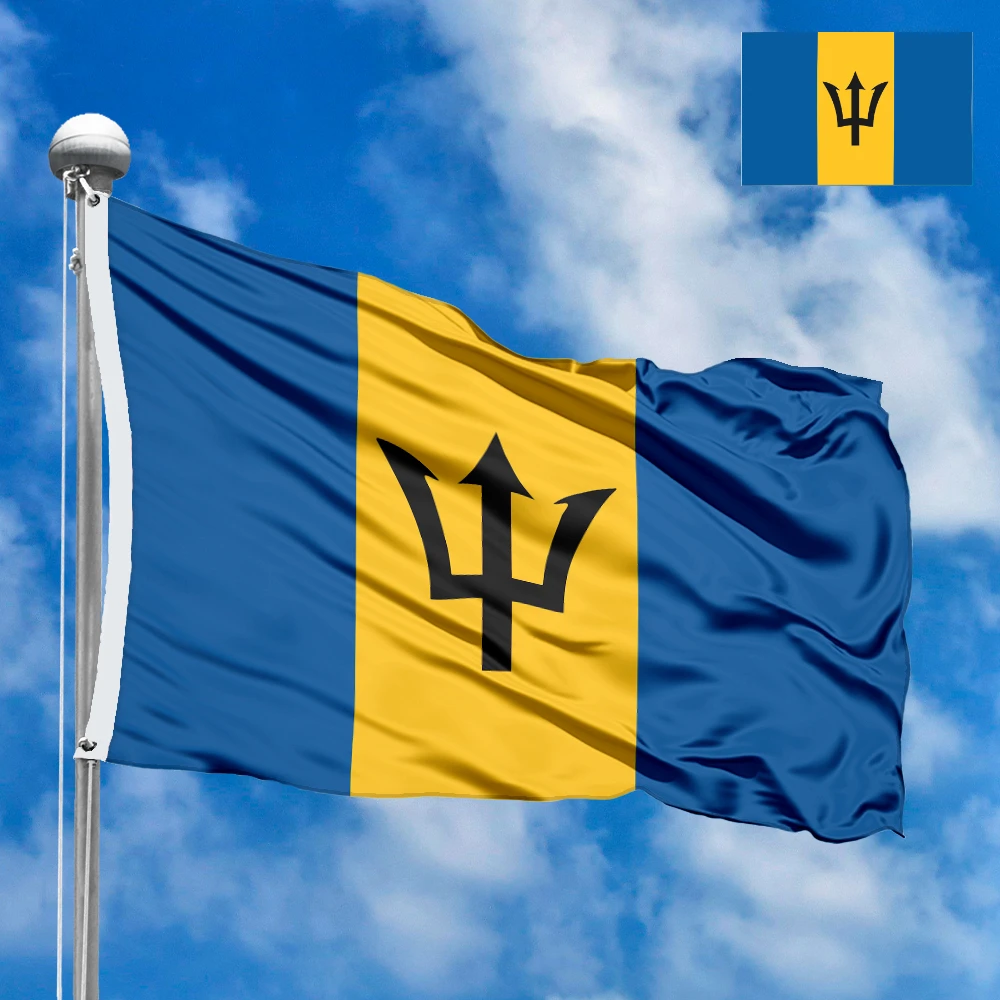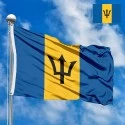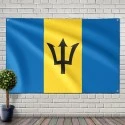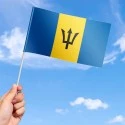The national flag of Barbados is a vibrant symbol that tells the story of the island, its natural beauty, and its journey to independence. Its design, adopted on the day of sovereignty, embodies the spirit of the nation and its break from the colonial past. The flag is a powerful source of national pride, serving as a reminder of the country's path to self-determination.
A Detailed Look at the Flag's Design and Symbolism
The flag of Barbados is a vertical triband with two outer bands of ultramarine blue and a central golden band. Centered in the golden band is a black trident head, which is commonly referred to as the "broken trident." This simple yet powerful design is rich with meaning and was selected from over 1,000 entries in a nationwide competition.
Each element of the flag carries a significant message, reflecting the core principles and identity of the Barbadian nation:
-
Ultramarine Blue: The two outer blue bands symbolize the sky and the sea, particularly the Atlantic Ocean and the Caribbean Sea that surround the island. They represent the vibrant maritime life and the natural beauty of Barbados.
-
Gold: The central golden band represents the sandy beaches of the island and the nation's commitment to prosperity and excellence. It also reflects the golden opportunities that the country holds for its people.
-
The Broken Trident: This is the most symbolic element of the flag. The trident was taken from the colonial badge of Barbados, where it was held by Britannia, the symbol of Great Britain. The fact that the shaft of the trident is broken signifies Barbados’s break with its historical and constitutional ties as a former colony. The three points of the trident represent the three principles of a democratic government: "of the people, for the people, and by the people."
The History and Adoption of the Flag
The history of the Barbadian flag is directly tied to the nation's independence. Before 1966, Barbados used the British Blue Ensign with the colonial seal of Barbados. The seal featured Britannia, a symbol of British naval power, holding a trident.
When Barbados prepared to become a fully independent nation, the government held a public competition to design a new national flag. A local art teacher, Grantley W. Prescod, submitted the winning design. His concept cleverly used the trident from the colonial emblem but broke the shaft, a powerful visual statement of freedom. The flag was officially hoisted for the first time at midnight on November 30, 1966, which was the country's first Independence Day.
Meaning and Significance for Citizens
For the people of Barbados, the flag is more than a national emblem; it is a sacred symbol of their freedom and unique identity. It represents the successful struggle for self-governance and the collective aspiration for a prosperous future. The flag is proudly displayed during national holidays, especially on Independence Day, and serves as a constant reminder of the nation’s resilience and its deep connection to its history and natural environment. The term "Broken Trident" is a popular nickname for the flag, highlighting its core message of freedom.
Interesting Facts
-
The flag of Barbados is the only national flag in the world to feature a broken trident.
-
The flag's design was chosen from over 1,000 entries submitted in a nationwide competition.
-
The three points of the trident symbolize the three key principles of democracy: "government of the people, for the people, and by the people."
-
The flag was raised for the first time on St. Andrew's Day, which is why November 30 is celebrated as both Independence Day and St. Andrew's Day in Barbados.
-
Before independence, the colonial flag featured Britannia, the personification of Great Britain, holding a trident, which made the symbolic breaking of the trident on the new flag a particularly potent statement.
In the demonstration images, full-size flags are shown with proportions of 2:3, and hand-held flags with proportions of 1:2.






 Waving flag
Waving flag
 Sizes:
Sizes:
 Round flag
Round flag
 Sizes:
Sizes:
 Rectangular flag 2:3
Rectangular flag 2:3
 Sizes:
Sizes: